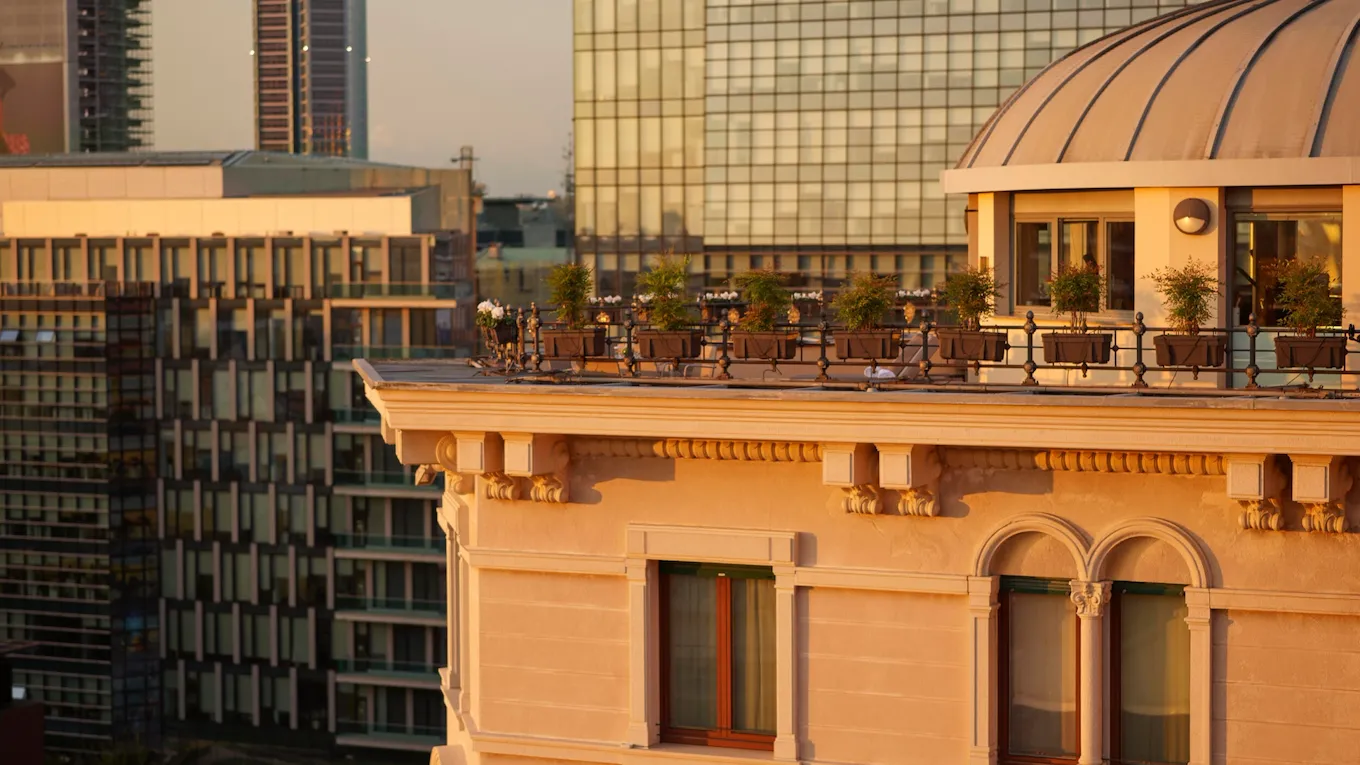A neighbourhood guide to Isola and Porta Nuova

Hints of history
Clues to the past are found in the names of these adjoining neighbourhoods, which are just a 15-minute stroll from us. Isola – Italian for island – became isolated from the city by railway tracks after Garibaldi Station was built in the 1960s. Back then, the working class district was characterised by butchers and bakers that had sprung up around Santa Maria alla Fontana, a beautifully frescoed church built around a healing fountain. Now a gateway to the future, Porta Nuova is named after the two marble arches that once formed part of the city walls during the Napoleonic era.
Isola and Porta Nuova were reinvented in the post-1990s building boom, and today tourists are drawn to the leafy Bosco Verticale, an iconic green development that soars over the skyline. Organic delis, hip bars and offbeat street art, as well as family-run shops, help retain Isola’s sense of community. Visitors can browse the pretty boutiques of Porta Nuova and discover lively markets and upmarket restaurants in the beating heart of the district, Piazza Gae Aulenti.
A creative haven
Isola is home to vintage shops and independent boutiques such as the jeweller Monica Castiglioni, while the Australian lifestyle brand Deus ex Machina epitomises the district’s free spirit. Even if you’re not shopping for a bike or surfboard made in Bali, breakfast at leisure in its plant-filled courtyard or linger over cooling cocktails. Porta Nuova’s shopping scene centres around the lively cobbled street Corso Como and Via Pietro Maroncelli, home to elegant stationery and illustrations made by Francesca Meana at Pourquoi Pas Lab.
Monica Castiglioni, Via Pastrengo,4 20159 Milan
Deus ex Machina, Via Thaon Di Revel,3 20159 Milan
Pourquoi Pas Lab, Via Tito Speri,1 20154 Milan
Delectable dining and drinks
Founded in 1993 on the site of an older restaurant, Osteria Dei Vecchi Sapori is a taste of Isola’s past. Bask in the original pebble courtyard on sunny evenings and sample the saffron risotto, or sit inside, where lamps effuse a golden hue. Experience the remarkable fusion of Italian and Japanese cuisine at Michelin-starred AALTO, and after dinner, see why The Botanical Club has garnered a reputation for its gin cocktails. As night falls, Blue Note calls – the city’s most distinguished jazz club.
Osteria Dei Vecchi Sapori, 3 Via Carmagnola, 20159, Milan
AALTO, Piazza Alvar Aalto, 15 Viale della Liberazione, 20124 Milan
Botanical Club, 11 Via Pastrengo, 20159 Milan
Blue Note, 37 Via Pietro Borsieri, 20159 Milan
Artistic discoveries
Imagination unfolds across the streets of Isola, with a winged angel and a macaw just some of the street art you may spot – especially on Sundays, when shop shutters reveal previously hidden artworks. Porta Nuova is home to Museo della Permanente, which dates back to 1886 and showcases 400 modern paintings, sculptures, drawings and engravings, including Emilio Tadini’s ‘The Dance of the Philosophers.’ For sunshine-lovers, Ross Lovegrove’s ‘Solar Tree’ and Alberto Garutti’s ‘Egg’ around Piazza Gae Aulenti shed some light. Fascinating public sculptures also dot the 25-acre Parco Biblioteca degli Alberi Milan.
Museo della Permanente, 34 Via Filippo Turati, 20121 Milan
Solar Tree, Piazza Gae Aulenti, 20124 Milan
Egg, Piazza Gae Aulenti, 20124 Milan
Explore more of Isola or the bohemian shops, restaurants and art in our neighbourhood guide to Brera, a short stroll of Hotel Principe di Savoia.